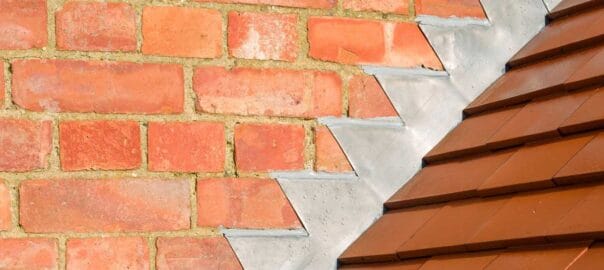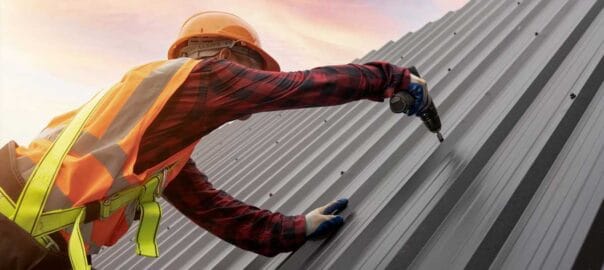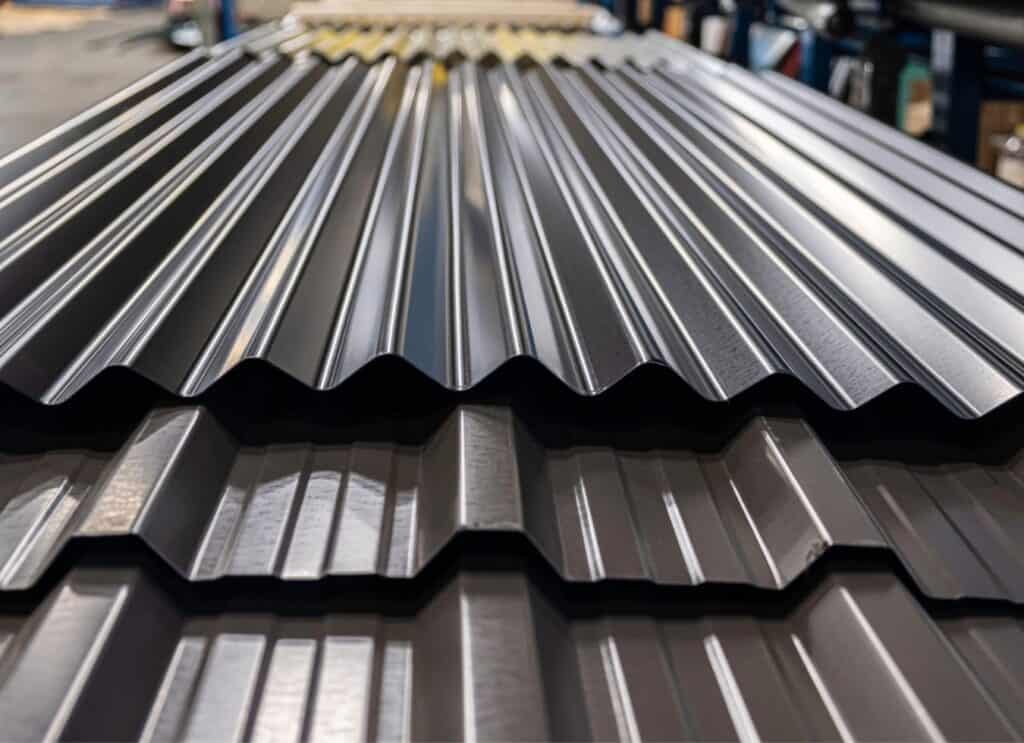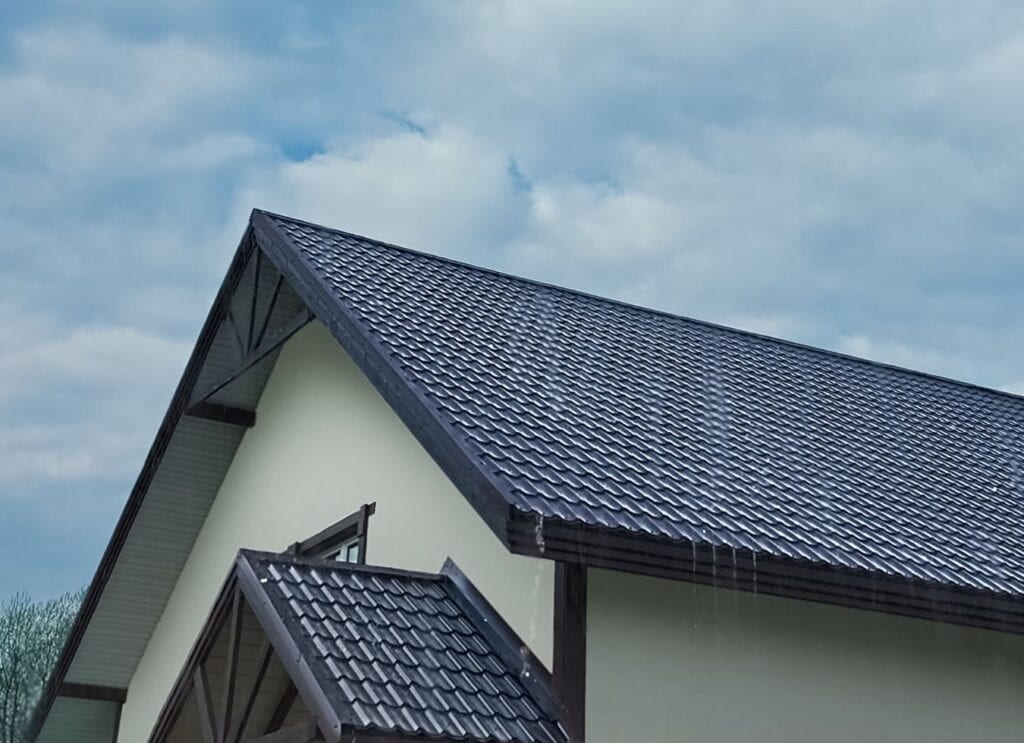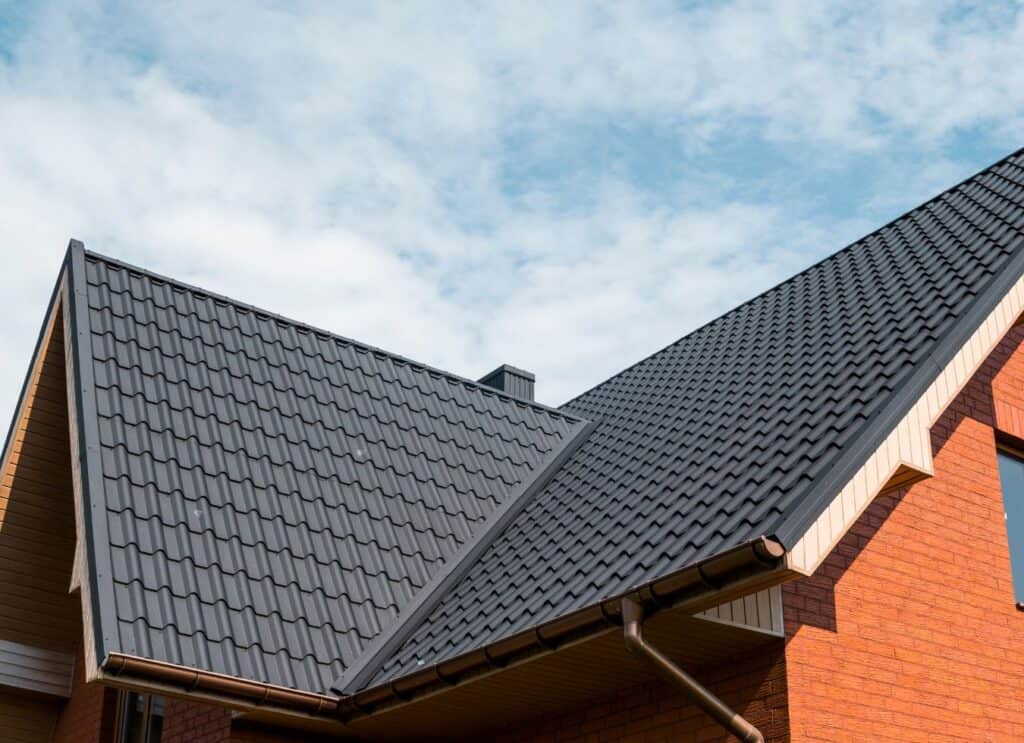Picture this: you’ve just installed a beautiful new roof on your home. The shingles are sleek, the color is perfect, and your house looks top-notch. But wait—what about those little metal strips that run along the roof’s edges and around chimneys, vents, and skylights?
Roof flashing may not get as much attention as your shingles or tiles, but let me tell you—it plays a pivotal role in protecting your roof from water damage and ensuring its long-term durability. If you think flashing is just a minor detail, think again! An adequately installed flashing system could be the difference between a dry home and a costly, time-consuming leak repair.
In this post, we’re diving deep into what roof flashing is, why it’s so important, and how it impacts the performance of your roof. We’ll also break down the types of flashing materials, common problems with flashing, and how to spot issues before they cause significant damage.
So, let’s flash forward to this crucial aspect of roofing and learn how it keeps your home safe, dry, and dry for years to come.

What Is Roof Flashing?
Roof flashing is a thin material—typically metal or, in rare cases, hard plastic—installed around roof openings and seams to direct water away from vulnerable areas. It’s like the unsung hero of your roof, essential for maintaining the overall importance of roof protection. While the shingles and tiles may be the show’s star, flashing ensures that water doesn’t slip in where it’s not supposed to.
Essentially, flashing is used to seal joints and seams between roofing materials and other components of your home, such as chimneys, vents, skylights, and valleys. Flashing’s primary purpose is to prevent water penetration and keep your home’s interior safe from leaks, mold, and structural damage.
Imagine a row of bricks in a wall—flashing acts as a protective barrier between the bricks and the water that could seep through if left unchecked. Flashing helps ensure that your roof holds up against the elements by channeling water away from these critical areas.
Why Flashing Is Crucial for Roof Performance
Water is the enemy of any roof. Over time, rain, snow, and ice can compromise your roof’s integrity, especially in areas where roofing materials meet or where penetrations (such as vents, pipe jacks, or chimneys) pierce through the roof. This is where flashing steps in to prevent moisture from creeping in.
The flashing system is your roof’s first line of defense against water damage. Flashing can extend your roof’s lifespan and prevent costly repairs if installed and maintained correctly. Water can infiltrate your home without blinking through seams, joints, and penetrations, leading to leaks and water damage. The worst part? Roof leaks can be sneaky—what looks like a minor issue on the surface can often be masking more significant problems hidden underneath, affecting the integrity of your roof.
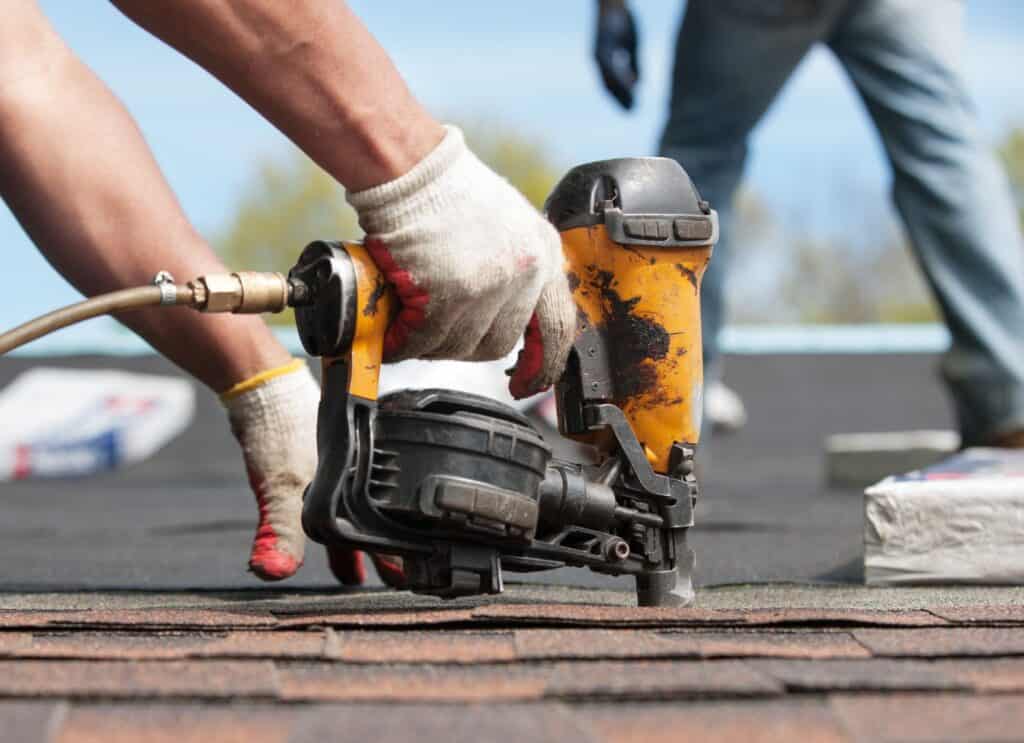
Types of Flashing Materials and When They’re Used
Flashing comes in different materials, each suited for different roof types, weather conditions, and installation areas. Let’s go over the most common flashing materials and where they are typically used:
1. Aluminum Flashing (what is used 95% of the time)
Aluminum flashing is one of the most commonly used materials for roof flashing. It’s lightweight, easy to work with, and corrosion-resistant. Aluminum is an excellent option for areas with moderate climates, as it holds up well against rain and wind. However, it’s not the best choice in coastal regions with saltwater exposure, as it can corrode over time in harsh conditions.
Best for: Flashing around vents, skylights, chimneys, and roof valleys. Our go-to material.
2. Copper Flashing (for higher-end custom builds) is popular among roofing contractors for its durability and aesthetic appeal.
Copper flashing is known for its durability and long lifespan. It’s an excellent material for high-end homes or areas where long-term performance is crucial. Copper naturally resists corrosion and doesn’t rust, making it ideal for high-moisture areas. Over time, copper develops a beautiful green patina that many homeowners appreciate for aesthetic reasons, but its true beauty lies in its performance as a type of roof flashing.
Best for: Flashing around chimneys, valleys, and other critical areas on high-end or historic homes.
3. Galvanized Steel Flashing (also comes in baked-on enamel colors now)
Galvanized steel is coated with a layer of zinc to prevent rust, which makes it an affordable and sturdy option for roofing projects. It’s stronger than aluminum and more resistant to damage from impacts or heavy snow. However, galvanized steel, like aluminum, is best used in areas without excessive saltwater exposure.
Best for: Flashing around chimneys, vents, and roof valleys in moderate climates.
4. Lead Flashing (not used much in CO any longer)
Lead flashing is often used in older homes or situations requiring maximum durability. Lead is highly malleable, making it easy to shape around complex roof penetrations. While it’s excellent at waterproofing, lead flashing is not the most eco-friendly choice, as lead can be toxic. It’s also heavier than other materials, so it may not suit every roof type.
Best for: Flashing around chimneys and in areas with high moisture or wind conditions.
5. Rubberized Asphalt Flashing (for flat and low slope roofs)
Rubberized asphalt flashing is a flexible, self-adhesive material used in areas where traditional flashing materials may struggle to adhere, like around irregular roof penetrations or in extreme weather. It’s also very effective at creating a waterproof seal, which is ideal for low-slope or flat roofs.
Best for: Flat roofs, areas with irregular roof shapes, or areas prone to standing water.

How Damaged or Improperly Installed Flashing Can Lead to Leaks
Flashing is a small but crucial part of the roofing system. If flashing is damaged, improperly installed, or missing altogether, it can lead to some serious issues— roof leaks.
1. Water Penetration
Flashing is designed to direct water away from vulnerable areas. If it’s not installed correctly or damaged over time, water can easily seep under the shingles or tiles and travel into your home. Common leak points are around chimneys, skylights, and roof valleys. These areas are particularly vulnerable.
2. Mold and Mildew Growth
When water gets into your roof, it doesn’t just stay in one spot—it can travel down into the walls and attic, where it’s trapped in dark, warm spaces. This creates the perfect breeding ground for mold and mildew. Over time, mold can damage your home’s structural integrity and create health hazards. This is why preventing leaks through proper flashing installation is so important.
3. Roof Decking Rot and Structural Damage
If water continues to leak into your roof, it can damage the decking, insulation, and even the rafters of your home. This leads to rot, weakening the structure of your home and potentially causing expensive repairs, making timely roof replacement vital. Flashing that’s not in good condition will accelerate this process.
4. Ice Dams (on Eaves and Rakes)
In colder climates, ice dams can form when melting snow refreezes along the edges of your roof. Improperly installed flashing can exacerbate this problem, leading to water backing up under the shingles, necessitating a roof replacement. This trapped water then leaks into your home, causing damage to both the roof and the interior of your house. Keeping flashing properly sealed can help prevent ice dams from forming in the first place.
Common Flashing Issues and How to Spot Them
Now that we’ve discussed the importance of flashing and how damage can lead to leaks, let’s discuss the common flashing issues to look out for and how to spot them.
1. Cracked or Bent Flashing can severely compromise the integrity of your roof and should be addressed by a qualified roofer.
Flashing is designed to be durable, but it’s not invincible. Over time, flashing can crack or bend due to extreme weather, wear and tear, or poor installation. If the flashing is broken, water can easily slip through the seams and cause leaks, highlighting the importance of roof maintenance.
Signs to look for include gaps between flashing and shingles, visibly bent or cracked metal, and areas where water is pooling around the flashing.
2. Missing Flashing
Sometimes, flashing can become dislodged due to high winds or poor installation. If the flashing is missing, water has a direct pathway into your home. Even a tiny gap in flashing can lead to big problems over time, mainly if it affects the types of roof flashing used.
Signs to look for include exposed roof penetrations (such as around vents or chimneys), gaps in the flashing around roof seams, and water stains inside the attic or on the ceiling.
3. Rust or Corrosion
Flashing materials like galvanized steel or aluminum can rust or corrode when exposed to moisture over time. If the flashing is severely corroded, it can no longer effectively do its job.
Signs to look for include orange rust on metal flashing, discoloration, or flakes of rust around the flashing areas.

Other Popular Questions We Receive Related to the Importance of Roof Flashing and Different Types of Roof Flashing
Q: What is the role of roof flashing in a roof system?
A: Roof flashing is essential for maintaining the integrity of a roof and preventing water damage. It acts as a barrier preventing water from seeping into vulnerable areas such as chimneys, vents, and roof planes.
Q: Why is understanding roof flashing important for homeowners?
A: Understanding roof flashing is essential for homeowners because it helps them recognize the significance of proper installation and maintenance. Knowing how flashing works can help them identify potential problems before they lead to costly repairs or roof replacement.
Q: When should I consider replacing the roof flashing?
A: You should consider roof flashing replacement if you notice signs of wear, such as rust, cracks, or gaps in the flashing. Additionally, if you experience water damage or leaks in areas where flashing is installed, it may be time for a replacement.
Q: How can I prevent water damage related to roof flashing?
A: To prevent water damage related to roof flashing, ensure that your roof installation includes high-quality flashing materials and schedule regular maintenance and inspection of the flashing. This will help identify any issues early on and maintain the flashing’s effectiveness.
Q: What are the various types of roof flashing used in roofing?
A: Various roof flashing types include step flashing, apron flashing, counter flashing, and pipe flashing. Each type serves a specific purpose and is designed for different areas of your roof to protect against water intrusion.
Q: How can I inspect my flashing to ensure it’s functioning correctly?
A: To inspect your flashing, look for visible signs of damage, such as cracks or rust. Ensure that the flashing is sealed correctly and that there are no gaps. Regular inspections, especially after severe weather, can help catch any issues early.
Q: What should I do if I need to repair roof flashing?
A: To repair roof flashing, consult a qualified roofing contractor or roofer. They can assess the damage and recommend the appropriate repairs or replacement options to ensure your roof system remains watertight.
Q: How does roof flashing contribute to the overall lifespan of a roof?
A: Roof flashing contributes to a roof’s lifespan by protecting critical areas from water intrusion. Properly installed and maintained flashing prevents leaks and water damage, which can lead to more extensive issues and premature roof replacement.
Q: Can I perform roof installation or repair on my own, including flashing?
A: While some homeowners may attempt DIY roof installation or repair, including flashing, hiring a professional roofing contractor is often recommended. They have the expertise and experience to ensure that flashing is installed correctly and meets local building codes.
Q: Where can I learn more about roof flashing and its importance?
A: You can learn more about roof flashing and its importance through roofing industry websites, local roofing contractors, and home improvement resources. These sources can provide valuable information on different flashing materials and best practices for maintaining and inspecting roof flashing.

Conclusion: Don’t Overlook Your Flashing!
Roof flashing is one of those things that often gets overlooked—until it’s too late. A well-maintained flashing system can protect your roof from water damage, extend its lifespan, and keep your home dry and comfortable, underscoring the importance of roof upkeep. On the other hand, damaged or improperly installed flashing can lead to costly repairs, water damage, and mold growth.
Whether installing a new roof or simply inspecting your current one, pay attention to any signs of damage. It’s crucial to get it as good as possible. If you’re unsure about the condition of your flashing, it’s always a good idea to call a professional like Denny’s Roofing to assess the situation.
Understanding what flashing does and how it impacts your roof’s performance will better equip you to protect your home from leaks and other issues. Keep your roof in tip-top shape, and your house will last longer than industry standards. It’s not that hard.

